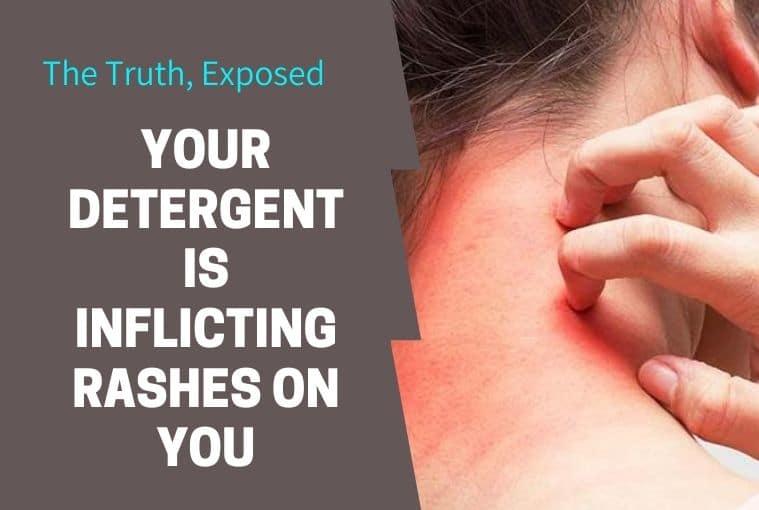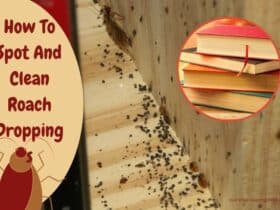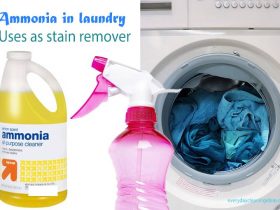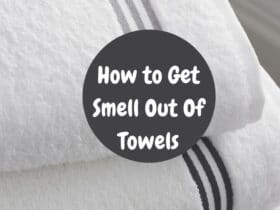Can’t account for those rashes? How could you, when you’re wearing the trouble – your detergent-laden clothes.
It’s a shocker – to know your detergent is not a problem-solver, but a problem-creator.
Laundry detergents are made up of chemicals harsher on your skin than soaps are. If you feel like you have developed a sudden allergy to washing powder, there is a good chance that you are actually suffering from a contact dermatitis rash.
If you have sensitive skin, you may even develop more serious conditions like eczema. Do not worry, I have it sorted out for you. I have been using a few techniques to avoid laundry detergent rashes. They have been working like magic for me.
Read this article till the end to know about what causes laundry detergent rashes, laundry detergent allergy symptoms, how long it takes to recover, and how to get rid of it.
What Causes Laundry Detergent Rashes?
I first became aware of laundry detergent rashes four years ago. My son was just a baby and he had these rashes. I was concerned that he had developed some skin condition. However, the doctor told me how laundry detergents can cause rashes in babies. I have suffered from rough and itchy skin after using detergents, but luckily there have been no rashes. Some main causes of laundry detergent rashes are the following.
- Some detergents are toxic. They contain allergens in the form of preservatives, enzymes, colors and dyes, and emulsifiers.
- You may have irritant or allergic contact dermatitis. This is basically your body reacting to substances your skin is allergic to. Both powder and liquid laundry detergents can trigger contact dermatitis.
What Are Laundry Detergent Allergy Symptoms?
Laundry detergents can cause different kinds of reactions, based on your skin type. Some people have even reported hives caused by fabric softeners. Most commonly, the symptoms are the following.
- Severe rashes, accompanied by itchiness.
- Rough skin.
- Burning sensation.
- Blistering.
- Sudden dryness or cracks on the skin.
How To Get Rid Of Laundry Detergent Rashes?
If you notice the above symptoms, you are probably suffering from rashes caused by laundry detergents. Luckily, there are several ways to get rid of laundry detergent rashes. Read on to know more about remedies for laundry detergent rashes, both clinical and homemade.
- Use a Steroid Ointment
Steroid ointments contain a chemical called hydrocortisone. Hydrocortisone can work wonders on your skin, especially if you have contact dermatitis. Steroid ointments yield surprisingly quick results. The problem with steroid creams is, however, the fact that your skin condition can recur after a few days. I suggest seeking professional help before you use a product with hydrocortisone. Use it only if your rashes are very severe and need to heal quickly.
- Apply a Calamine Lotion
Calamine is a combination of zinc oxide and ferric oxide which is used to treat many skin conditions. It has great astringent and antipruritic properties. Calamine is both cheap and easily available.
Keep a small bottle of calamine lotion stored in your cupboard. It is capable of healing rashes, burns or insect bites. However, most varieties of calamine lotion tend to dry out your skin. If you have dry skin already, go for a moisturizing calamine lotion instead of a regular one.
- Simply Use Ice Or Water
If detergents trigger burns on your skin, use ice or cold water to soothe them. While using ice, wrap it in a thin cloth so that it soothes your skin, but does not numb it. You can also try running cool water on the itchy part of your skin. Another method is wetting a towel or a cotton ball and keeping it on your skin for a while.
- Make An Oatmeal Bath
Did you know that oatmeal is great for healing and protecting your skin? There are several oatmeal creams, lotions, and mixes that you can buy over the counter. However, soaking in an oatmeal bath is way more effective. Here is how you can prepare an oatmeal bath.
Do not use breakfast oatmeal. It doesn’t work. To make your bath, you will need colloidal oatmeal, which is also available at shops. Colloidal oatmeal is nothing but very finely ground oatmeal. You can make your own colloidal oatmeal at home instead of buying it from shops.
To make colloidal oatmeal, take a cup of whole oats. Process it in a mixer or a food processor until it reaches a very fine consistency.
To check whether your mixture is fine enough, do this simple test. Take a pinch of your mix and place it on a cup of hot water. If it is finely blended, it will mix with the water. If it sinks, that means that you need to blend the oats a little finer.
I. To make your bath, first, fill your tub with warm water. Your water should be lukewarm and not hot. Excessively hot water can dry out your skin and cause more problems.
II. It is now time to mix in your oatmeal. Use one cup of colloidal oatmeal in an entire tub of water. You can use more if you feel like you need it. There are no side effects.
III. If you want your bath to smell better, use two drops of your favorite essential oil. Lavender oil and tea tree oil are great ideas, but feel free to get more creative.
IV. Soak in your bath for 10-15 minutes. You will already feel your skin more soothed and relaxed than before.
V. While getting out of the bath, be a bit more careful than usual. Oatmeal mixed with water feels slimy. It can make the surface of your feet quite slippery. Make sure that you do not fall and hurt yourself.
VI. Once you are out of the tub, gently pat your skin dry. If you rub your skin, you will take away the binding properties of the oatmeal bath.
VII. You can use aloe vera gel or some moisturizing lotion after your bath for some added goodness.
- Other Remedies Using Oatmeal
If you do not have a tub at your home, there are a few other options that I can suggest. Make your colloidal oatmeal using the method already stated above. After you are done, you can use it in two ways.
● Mix a tablespoon of oatmeal with a cup of water. Apply it on your skin like a lotion. You can also store it in a spray bottle and spray the mixture on your skin to ensure even distribution.
● If you have only a couple of rashes, you do not need to bother applying oatmeal on your entire body. Instead, mix colloidal oatmeal and warm water in equal proportions until they form a paste-like consistency. You can apply this paste on your rashes and leave it to dry. You can also bandage the area with a thin cloth to make sure that the mixture stays on.
How To Prevent Laundry Detergent Rashes?
Now that you know how to identify and treat laundry detergent rashes, use these techniques as a preventive method to avoid detergent rashes in the future.
- Do Not Use Detergents With Fragrances Or Dyes
Fragrances and dyes often have allergic properties which can trigger contact dermatitis. Instead of using a heavily perfumed and colored laundry detergent, use a fragrance-free and dye-free alternative. Vegetable-based laundry detergents are a great option.
- Keep Your Washing Machine Clean
Did you know that a dirty washing machine can cause a rash? Yes, that’s right. It can be triggered by residues from your previous session. If you do not clean your washing machine regularly, it may become infected with harmful germs and bacteria which can cause rashes as well. To make sure that this does not happen to you, clean your washing machine with hot water, baking soda, and vinegar.
- Make Your Own Laundry Detergent
Were you aware of the fact that you can make your own laundry detergent at home? Homemade detergents are not harsh on your skin, easy to make, and cheap. You will need hot water, baking soda, salt, and liquid castile soap. Make sure that the liquid castile soap that you are using is unscented
To make your laundry detergent, you will need to mix salt and baking soda in very hot water. Once they have dissolved in the water, add the liquid castile soap. If you want to make your soap smell better, add a few drops of your favorite essential oil.
Once you are done, your preparation will look and feel exactly the same as a store-bought laundry detergent. If you want to use your homemade laundry detergent for washing your delicates and woolen garments as well, add coconut oil in the boiling water.
You now know all about what causes laundry detergent rashes, how to spot them, how to get rid of them, and how to prevent them. If you follow the instructions and tips stated above, you would not have to worry about your rashes for much longer. They will be gone within a few days. Use the remedies for soothing your skin, and remember the preventive measures to stay safe from laundry rashes in the future.









Leave a Reply
View Comments